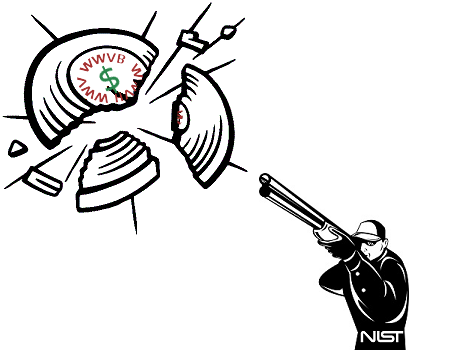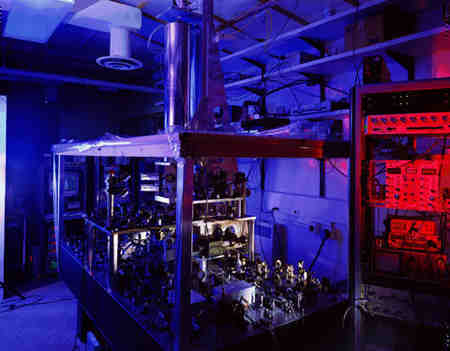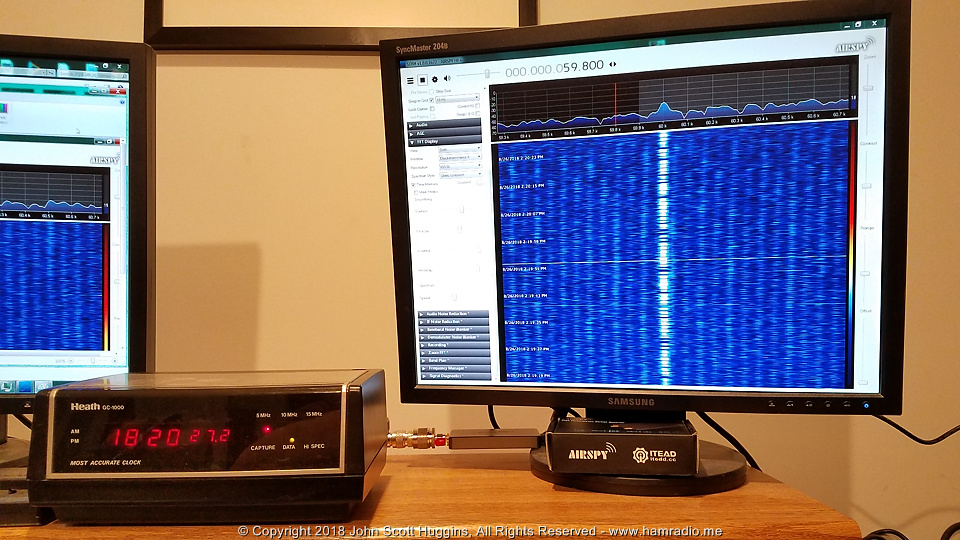Uh oh…

Part of above image licensed from Vector Stock.
As surreal as this may sound, the National Institute for Standards and Technology (NIST) has the radio broadcast of frequency standards on the budgetary chopping block. As usually happens, congress appears to have soundly rejected this along with the rest of the presidential budget and countered with much higher funding to NIST. Regardless, NIST isn’t quite fully funded and cuts from construction funds are still likely. We are left to wonder if NIST is really serious about turning off access to the USA’s primary frequency standard therefore abrogating one of their fundamental and obligatory missions.
Assuming the worst for now, what follows is a letter to my congressman and senators concerning NIST’s recommendations to terminate the time and frequency broadcasts noted in their 2019 budget recommendation.
But first things first… please review and sign these petitions.
Sign the Whitehouse.gov WWV Petition
Sign the Change.org WWV Petition
What about the 60 kHz WWVB you ask? Yeah many folks including click-bait headline writers seem to miss the fact WWVB is also on the chopping block, but baby steps right? The progenitor article suggesting only WWV and WWVH are at risk appears to be from SWLing.com. The ARRL parroted this with zero vetting of the information. To SWLing.com’s credit, the article and its title have been properly amended, but the original title exists in its URL for comparison. The ARRL doesn’t seem to amend erroneous information very often and that’s a problem for the many who take them at their word.
Hello Representative/Senator.
I note a troubling proposal on the National Institute of Standards and Technology (NIST) presidential budget web site includes this text under “Illustrative program reductions in FY 2019″…
-$6.3 million supporting fundamental measurement dissemination, including the shutdown of NIST radio stations in Colorado and Hawaii
Emphasis added.
More detail is found in the 2019 NIST budget proposal with the following troubling statement on page “NIST 25″…
“NIST will discontinue the dissemination of the U.S. time and frequency via the NIST radio stations in Hawaii and Ft. Collins, CO. These radio stations transmit signals that are used to synchronize consumer electronic products like wall clocks, clock radios and wristwatches, and may be used in other applications like appliances, cameras, and irrigation controllers.”
The first sentence applies to WWV and WWVB in Colorado and WWVH in Hawaii. The second sentence specifies products reliant on WWVB. Hence the above paragraph refers to three radio broadcast stations WWVB, WWV and WWVH all run by the U.S. Government for the benefit of its citizens. Key purposes of these stations include:
- Broadcast to the citizens of the U.S. the civil time directly traceable to NIST/USNO standard Timebase (rather than “Indirect” traceable).
- Broadcast to the citizens of the U.S. and specifically those involved in STEM a precise frequency (60kHz, 2.5 MHz, 5 MHz, 10 MHz, 15 MHz, 20 MHz and experimentally 25 MHz) directly traceable to NIST standard Frequency (rather than “Indirect” traceable).
- Broadcast to citizens audio frequency reference signals on WWV and WWVH.
- Broadcast to citizens news and information of importance to those involved in marine navigation.
Fulfillment of U.S. Constitutional mandate
Article I, Section 8, Paragraph 5…
To coin Money, regulate the Value thereof, and of foreign Coin, and fix the Standard of Weights and Measures;
Emphasis added. No doubt this relates to the fair and effective exercise of commerce among the states, but the last two hundred thirty-one years of technical progress since ratification baselines the purpose of the U.S. Naval Observatory (USNO) and NIST management of standards to include time and frequency. To be of value to the citizens the various units and standards managed by these government institutions must be made readily and affordably accessible to the public.
Radio transmission fulfills constitutional mandate and international treaty
By broadcasting time announcements, time codes and frequency standards on the various internationally known frequencies outlined in the…
Article 1.53 of the International Telecommunication Union’s (ITU) Radio Regulations (RR)
…NIST (and USNO) provide the citizens an invaluable availability in line with international agreement via RECOMMENDATION ITU-R TF.460-6 for Standard-frequency and time-signal emissions goals considering…
- that the World Administrative Radio Conference, Geneva, 1979, allocated the frequencies 20 kHz +/- 0.05 kHz, 2.5 MHz +/- 5 kHz (2.5 MHz +/- 2 kHz in Region 1), 5 MHz +/- 5 kHz, 10 MHz +/- 5 kHz, 15 MHz +/- 10 kHz, 20 MHz +/- 10 kHz and 25 MHz +/- 10 kHz to the standard-frequency and time-signal service;
- that additional standard frequencies and time signals are emitted in other frequency bands;
- the provisions of Article 26 of the Radio Regulations;
- the continuing need for close cooperation between Radiocommunication Study Group 7 and the International Maritime Organization (IMO), the International Civil Aviation Organization (ICAO), the General Conference of Weights and Measures (CGPM), the Bureau International des Poids et Mesures (BIPM), the International Earth Rotation Service (IERS) and the concerned Unions of the International Council of Scientific Unions (ICSU);
- the desirability of maintaining worldwide coordination of standard-frequency and time-signal emissions;
- the need to disseminate standard frequencies and time signals in conformity with the second as defined by the 13th General Conference of Weights and Measures (1967);
- the continuing need to make universal time (UT) immediately available to an uncertainty of one-tenth of a second,
…recommends…
that all standard-frequency and time-signal emissions conform as closely as possible to coordinated universal time (UTC) (see Annex 1); that the time signals should not deviate from UTC by more than 1 ms; that the standard frequencies should not deviate by more than 1 part in 10^10, and that the time signals emitted from each transmitting station should bear a known relation to the phase of the carrier;
A quick summary of each service fulfilling the above follows:
WWVB
WWVB is broadcast on the extraordinarily low frequency of 60,000 Hz (60 kHz) incorporating two functions: absolute time and reference frequency. The former is how the various appliances mentioned in the NIST paragraph above sync their clocks – You may well have one such clock in your office right now that never needs setting thanks to the time signal in the 60 kHz transmission from Colorado. The later purpose is of frequency standard. NIST is America’s calibration signal for accurate timing and having a broadcast radio signal with a precise 60 kHz is invaluable to a good many Stratum 1 time servers around the country that help the Internet maintain time.
WWV
Broadcast from Colorado on a variety of shortwave frequencies from 2.5/5/10/15/20/25 MHz (and experimentally 25 MHz), the WWV radio signal is, like WWVB, both a frequency standard and a time broadcast. The time information is sent via male voice along with an embedded signal useful to synchronize radio clocks. Anyone with the most basic of radio receiver can listen to WWV and hear the current time most anywhere in the continental U.S. thanks to the wide variety of frequencies 2.5/5/10/15/20/25 MHz it broadcasts.
As mentioned above the radio carriers of each broadcast frequency is a primary calibration frequency reference utilized by metrology services (the test equipment utilized by science, industry, and government).
WWVH
WWVH is practically identical to WWV, but broadcast from Hawaii on 2.5/5/10/15 MHz using a female voice and distinct tones to differentiate it from WWV.
Necessity of WWVB outlined by NIST itself
NIST’s own wording in their budget paragraph above is testimony to the necessity of WWVB to the American people. NIST has promoted the use of WWVB for decades providing engineering advice to industry via their NIST Recommended Practice Guide on how best to use the 60 kHz signal for no-set clock products found in almost any office space in the CONUS. A hint to the popularity of WWVB is found in the forward of their guide…
“Radio controlled clocks represent a true revolution in timekeeping. Clocks that synchronize to NIST radio station WWVB now number in the millions in the United States, and new sales records are being established every year. As a result, many of us are now accustomed to having clocks in our homes, offices, and on our wrists that always display the correct time and that never require adjustment.”
Indeed the products available, including many low power battery products, provide time accurate to within a second. The last sentence on their web page History of WWVB says…
“The increase in power greatly increased the coverage area, and low cost radio controlled clocks that synchronized to WWVB soon became commonplace throughout the United States.”
A walk down the clock aisle of Wal-Mart or a search for “atomic clock” on Amazon leaves little doubt of WWVB’s entrenchment into American life. Page 170 of the U. S. Department of Commerce March 1995 report “U. S. National Spectrum Requirements: Projections and Trends” highlights industrial users as well…
“Approximately 1000 entities from government, private industry, universities, science, and the military have been identified as current users [of WWVB]. Primary applications for WWVB are in scientific data monitoring, electric power system operations, standards laboratories, communication system calibrations, and military applications.”
It is a bit strange for NIST to suggest pulling the rug out from under the very industry they helped create with their reliable WWVB time broadcast service.
Necessity of WWV and WWVH
The WWV and WWVH shortwave time broadcast services likely have less utility to the bulk of the American people and it may seem more difficult to find reasons to maintain this facility. May I suggest the following motives for continuing to broadcast WWV/H.
- Reason 1: In the age of the Internet where time synchronization via services like the Network Time Protocol (NTP) work very well, realize that not everyone in the CONUS has access to reliable internet service, hence, have a requirement for the reliable WWV/H time broadcast heard in their inexpensive shortwave receiver.
- Reason 2: WWV/H provides the citizen with a simple and reliable redundant/backup source for correct time should other systems fail or become temporarily unavailable.
- Reason 3: Citizens in remote areas out of cellular reception can obtain the time with a low power and portable shortwave receiver.
- Reason 4: Metrology services use the primary frequency reference of the radio carrier for calibration.
- Reason 5: Accuracy of transceiver frequency oscillators is easily verified by tuning in WWV or WWVH.
- Reason 6: The WWV/H broadcasts are the only free way to obtain access to a primary frequency reference.
WWV and WWVH for disaster preparedness
It’s no secret disaster scenarios like Puerto Rico bring out amateur radio, commercial, NGO, and government shortwave operations. Many of these operators are in remote areas and lack some of the niceties such as Internet and cellular connectivity and the correct time they bring with them. With WWV and WWVH continuously on the air at some or all these frequencies, 2.5, 5, 10, 15, 20 and experimentally 25 MHz, a shortwave operator merely has to spin the dial to attain…
- accurate time instantly,
- accurate frequency instantly to verify accuracy and stability of their radio’s oscillator that is often a problem when operations expose less sophisticated radio circuitry to tropical heat,
- accurate notion of shortwave propagation to decide which frequency provides the best radio circuit for a given season, month, day or hour.
One should not underestimate the true value of this capability to entities leaning heavily on shortwave radio operations.
What about GPS/NTP/Cellular?
Americans have a wide variety of time sources available including GPS, Internet (via NTP) and the cellular system. GPS systems work very well, but require more than a little power to function given the nature of programmatically decoding the microwave GPS signals. Both the Internet and cellular solutions require connection to their respective systems to function. Citizens vacationing or working in remote areas are likely not going to have these services available at all times. The only truly coast to coast source of time synchronization available to Americans in the U.S. are the three NIST time broadcast stations WWVB, WWV and WWVH.
GPS is a popular source of frequency standard in many laboratories and engineering settings, but is only traceable to NIST accuracy rather than being direct NIST accuracy found in the WWVB, WWV, WWVH broadcast signals.
A form of enhanced WWVB is proposed by NIST itself to address too much reliance on GPS for Smart Grid synchronization…
Time Distribution Alternatives for the Smart Grid
…with the point being GPS should not be a singular source of time.
Internet relies on WWVB and GPS anyway
WWVB and GPS are primary sources of time for NTP Stratum 1 time servers on the Internet. GPS is certainly the more convenient of the two, but one needs to understand the GPS system has its vulnerabilities to jamming, faking, etc. Having redundant clock sources is the best way to ensure continuity of accurate time on the Internet. We have this today in the WWVB and GPS services. Taking one away puts too much reliance on the other.
GPS has a weakness
The GPS system’s accuracy is also its Achilles foot in that pilotless drones, using simple GPS receivers, can be fashioned into very accurate weapon delivery systems for criminal/terrorist activities. It is true drone manufacturers are trying to program around this vulnerability, but these safeguards are rather easily worked around by modest engineering talent. It is not an exaggeration to say we will likely see a day when the GPS system is either tweaked or temporarily turned off to thwart its use as tool of destruction.
Achieving redundancy with WWV and WWVH
While visiting family in Maine this month, I met some graduates from the Maine Maritime Academy while we all did some viewing through my telescope. The topic turned to stars where I was pleasantly surprised they know the brighter star names. Sensing why, I asked if they still teach celestial navigation. They said absolutely so as to meet the open seas requirement for backup navigation if primary means fail. Redundancy seems to be important for international shipping.
GPS is, of course, today’s favorite navigation system. Unfortunately with the demise of the Loran and Omega systems, a backup means of knowing where you are is pragmatic. NISTs own publication concerning Time Distribution Alternatives for the Smart Grid underscores the need for redundancy.
Navigating with a sextant requires some notion of local time and the WWV/H stations offer the celestial navigator that information. The larger point here is, of course, not to relay on one system for information… in this case GPS. The WWVB, WWV and WWVH stations provide a wonderful backup to time information along with access to the nation’s frequency reference standard via their rf carriers.
Promoting STEM in education with WWV and WWVH
The road to careers in science, technology, engineering, and mathematics (STEM) is frequently paved by stimulating interests in the radio arts. This often involves the discovery of shortwave radio. It doesn’t take long for someone new to shortwave to find the WWV and WWVH time broadcasts. Shortly thereafter students learn to understand these broadcasts provide direct access to the nation’s frequency and time standards without the need for separate infrastructure (GPS, Internet, Cellular, etc.). It’s hard to describe the feeling, but rest assured there is confidence and comfort to suddenly learn and understand your nation cares enough about its people to ensure they have “direct” access to two of many important measurement standards maintained by the U.S. government.
Final thoughts
The lower frequency WWVB time and frequency standard broadcast service supplies accurate time to the Internet as well as all too many wall office clocks and some wrist watches very economically with reasonable robustness. Indeed NIST’s recent innovations to the WWVB modulation format to improve reception sensitivity is testimony of their desire to continue its utility to the American people. Why they suggest terminating the service in their 2019 budget request is confounding.
A case is often made against the continuance of the WWV and WWVH time broadcasts as the population it serves shrinks. A counter to this is the notion these services provide easy to receive time to mariners, hikers, off the grid people, remote areas, and low income population. As well the broadcast of stable, primary frequency references is of value to the technology and communication industries.
If NIST is going to use U.S. tax payer funds to continue maintaining and improving their U.S. frequency standard…

…the U.S. tax payer deserves access to this accurate standard. The only method currently available is via the NIST radio transmissions.
Conclusion
All three NIST time and frequency broadcast stations provide redundancy and utility to the American people who have come to rely on them in more ways than outlined above. Shutting the broadcasts down will…
- Leave some Americans without a convenient source of time in some situations;
- Leave engineers and technologists without a convenient frequency reference;
- Leave professional mariners without a backup time source for their sextant navigation;
- Leave first responders in disaster areas (i.e. PR) with one less backup to lean on.
All three NIST broadcast services (WWVB, WWV and WWVH) are the only primary frequency standard available to the public requiring no infrastructure to access. To be frank, silencing our time broadcasts will be embarrassing to a country supposedly at the cutting edge of technology. It is prudent to have both old and new technologies work together for a solid and redundant source of time. Please see to it that WWVB, WWV and WWVH remain on the air for the sake of our nation.
Readers, please don’t forget to review and sign these petitions…
